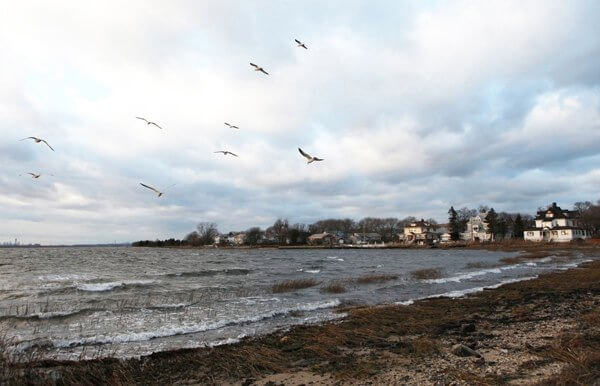By Naeisha Rose
To continue improving the health of Jamaica Bay, the city Department of Environmental Protection announced last week that it has begun to upgrade the Rockaway Wastewater Treatment Plant.
The goal of the $23 million project is to reduce the discharge of nitrogen into the bay and improve the ecology of the waterway by 2020, according to the DEP.
The treatment plant in Rockaway Park in Seaside was built in 1952 and designed to remove pathogens from wastewater, not nitrogen, which is a naturally occurring element found in food and organic materials, according to the DEP.
“Although nitrogen wasn’t originally removed from the water being released into Jamaica Bay, I am happy to see that DEP is following up on further research that shows how harmful nitrogen can be to the health of the bay,” said state Sen. Joseph Addabbo, Jr. (D-Howard Beach), a member of the Senate Environmental Conservation Committee.
The excessive growth of algae caused by the high levels of nitrogen was not taken into consideration by the DEP, because nitrogen does not pose a risk to human health the DEP said. It is inhospitable for marine life, however, leaving the migratory birds that feed on them with little food and there is evidence it corrodes the marshlands that help to prevent shoreline erosion, according to New York City Audubon.
The city Audubon is an independent non-profit affiliated with the National Audubon Society, and it works to protect many species of birds living in the 30,000 acres of wetlands, forests and grasslands in the city.
The health implications not only affect southern Queens neighborhoods as Jamaica Bay extends into Brooklyn, including neighborhoods such as Mill Basin, Bergen Beach and Canarsie.
“Jamaica Bay is a vitally important ecological and recreational resource for the borough of Queens, and the improvement of its overall health is a priority,” said Queens Borough President Melinda Katz. “DEP’s efforts to reduce the amount of nitrogen released into Jamaica Bay will do a great deal to enhance the bay’s water quality, promote a cleaner environment and improve public health.”
Jamaica Bay, an 18,000-acre wetland estuary, is home to 325 species of birds, 50 species of butterflies, 100 species of fish and a great place for recreational activities like archery at Floyd Bennet Field, swimming or surfing at Jacob Riis Park or Rockaway Beach, biking at Fort Tilden, and boating at Marine Park or the Gateway Marina, according to the National Park Service.
The Rockaway Wastewater Treatment Plant currently removes approximately 45 percent of nitrogen in treated water, but the new enhanced nitrogen removal technology will convert the element into inert gas for release into the environment without harming the atmosphere, according to the DEP.
The DEP collects and treats, an average of 1.3 billion gallons of wastewater each day, which travels through the city’s 7,500-mile sewer system until it reaches one of 14 wastewater treatment plants.
This upgrade at the Rockaway plant complements the $460 million in upgrades that were completed in 2017 to reduce nitrogen discharges at Jamaica and 26th Ward Wastewater Treatment Plants, which also drain in Jamaica Bay. Those projects started in 2010.
“Ensuring the proper collection and treatment of wastewater is essential to protecting public health and Jamaica Bay,” said DEP Commissioner Vincent Sapienza. “Working with environmental groups and local partners we have seen tremendous improvements in the ecology of Jamaica Bay over the last 20 years and reducing nitrogen levels is one of many fronts we continue to push forward on.”
Reach reporter Naeisha Rose by e-mail at nrose


































